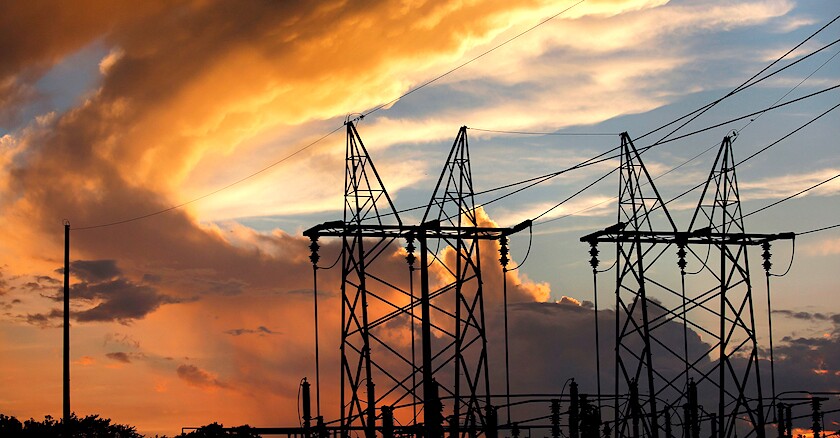In Brief:
As of Sept. 11, the U.S. had seen 23 weather and climate disaster events in 2023 that each brought losses in excess of $1 billion. With three months left in the year and hurricane season still in progress, the number to date was almost three times the 40-year average (8.1) for such events.
The likelihood and severity of such events — whether wildfires, atmospheric river rainstorms or hurricanes — increases as air and ocean temperatures rise. This year — 2023 — is on track to be the warmest year since scientists began keeping records in the mid-19th century.
Experiments establishing the fact that CO2 can trap heat go back to the mid-1800s. Before the 20th century began, a Swedish Nobel laureate estimated that if atmospheric levels of CO2 increased by 50 percent, the planet would warm by several degrees. (He believed it would take 3,000 years for atmospheric CO2 to increase this much, but it already has.)
Of all the strategies for reducing CO2 emissions, energy efficiency would seem to be the easiest for all stakeholders to embrace. It means wasting less of a vital resource that has limits and is costly to produce. According to the U.S. Energy Information Administration, power plants that used fossil fuels had to pay 34 percent more for coal, natural gas and petroleum last year.
However, a new survey of energy-efficiency programs at the nation’s 53 largest utilities finds that their energy savings dropped more than 5 percent between 2018 and 2021. Spending on efficiency programs decreased almost 5 percent.
There are standouts in the Utility Energy Efficiency Scorecard from the American Council for an Energy-Efficient Economy (ACEEE), but the sector with the most power to drive efficiency programs seems to be dropping the ball.
This finding is a major disappointment at a time of climate crisis, says Mike Specian, utilities manager at ACEEE and lead author of the scorecard. “It’s a sign that we are not moving in the right direction — we should expect to see energy savings going up on balance across the country.”

(ACEEE)
Incentivizing Efficiency
The 53 utilities evaluated by the scorecard accounted for almost 60 percent of electricity sales in the U.S. in 2021. ACEEE evaluated them using a scoring system applied to their energy-efficiency program performance, offerings and “enabling programs” such as customer financing, education and outreach or job training. On a scale of 100, only 15 of the utilities achieved a score above 50; just 11 earned half or more of the 54 points possible for program performance.
Eversource in Massachusetts topped the list with a score of 85. PG&E in California and National Grid in Massachusetts were the only others to score 80 or above (both with 80.5). Dominion in Virginia and Duke Energy in North Carolina were the only utilities in the top 30 to score less than 10 for their program performance.
Most of the utilities that scored well “are in states that have enacted robust energy savings targets and provide strong regulatory support for achieving those targets,” ACEEE says. More than 25 states have “energy-efficiency resource standards,” long-term energy savings targets that go hand in hand with standards for renewable energy generation.
Dominion in Virginia exemplifies this, moving from 50th place in ACEEE’s 2020 scorecard to 27th in the 2023 edition. The Virginia Clean Economy Act, enacted in April 2020, required it to achieve a 5 percent reduction from its 2019 sales level by 2025. This was the utility’s first efficiency mandate from the state.
Utilities operate within a “cost of service” regulatory framework, focused on ensuring they can bill enough to recoup the cost of providing service and make a profit. Pushing users to conserve energy might be for the public good, but they’re not incentivized to put climate concerns above profit.
Performance-based regulation (PBR) is a way around conflicts between the bottom line and energy conservation, says Ava Gallo, climate and energy manager for the National Caucus of Environmental Legislators (NCEL). “You can ensure that utilities aren't just making revenue by building out fossil fuel infrastructure, instead incentivizing them for serving the public interest and following state policy goals.”
More than half of U.S. states use a PBR of some sort to reward utilities for reaching efficiency targets. The most common incentives include allowing them to have a share of savings achieved or a percentage of program costs.
Utility policy is a climate policy, Gallo says, because utilities control so much about the power system. However, it can be difficult for under-resourced legislators who also have full-time jobs to find time to unravel the complexities of utility policy. NCEL organizes webinars, briefings and education sessions to assist them.

(NCEL)
Holding Utilities Accountable
“The level of investment in low-income programs absolutely needs to go up,” says ACEEE’s Specian. The buildings and homes that cost-burdened customers live in are most likely to be in bad condition, and it costs more to achieve significant energy savings in them.
In 2022, Maryland state Del. Lorig Charkoudian passed a bill that will bring energy-efficiency upgrades to low-income households. She’s also worked on legislation that would change rules for utility operations.
It’s the job of the legislature and the public service commission to hold utilities accountable, says Charkoudian, who holds a Ph.D. in economics from Johns Hopkins University. “The problem, and the challenge, is that these utilities have extraordinary resources, lawyers and trade associations that are solely dedicated to maximizing shareholder profits.”
Charkoudian has sponsored a bill that would restrict the use of ratepayer funds to cover the costs of lobbying. She’s also attentive to the difference between energy reduction and greenhouse gas reduction. A rebate for a more efficient gas appliance means a long-term commitment to fossil fuel.
“It does cost less to implement energy efficiency than to build new power plants, whether clean or dirty power plants, but the incentive is not there for monopoly utilities,” Charkoudian says. “The question comes back to how we write rules that right the market, so they have the right incentives and they aren’t able to take advantage of the wrong incentives and do things that are harmful to communities or our planet.”
Energy conservation is fundamental to real progress toward a clean energy supply. Adding more wind and solar to the grid can only go so far. “If we electrify everything and don’t do efficiency work, we couldn’t keep up with the amount of energy we would need,” says Charkoudian.
Virginia’s Clean Economy Act was a big step forward, says state Sen. Ghazala Hashmi, but it doesn’t signal that all of her colleagues in the Legislature agree that human activity affects the climate. Coastal and farming communities in her state are already bearing the brunt of warming, and she’s hoping to see attention shift from politics to these human costs.
Already, there is bipartisan support for the workforce development and job training opportunities that are integral to the success of energy-efficiency programs. The economy in the southwest portion of the state has historically relied on coal mining, but that industry has been in steep decline for decades.
There’s a concentrated effort to provide training opportunities through community colleges in the region, and to spur economic development around clean energy. Hashmi worked as a college professor for nearly 30 years before coming to the Legislature, and a few years ago she carried legislation that established an Office of Education Economics to assess workforce needs and develop curriculum around them.

(NOAA)
Not a Matter of Aspiration
Increased energy use during “peak demand" hours can strain utility capacity. This can force them to pay high prices to augment their supply. It can also precipitate brownouts and blackouts.
Meeting peak demand is already a major concern as customer bases grow and warmer weather becomes the norm. Extreme heat and cold events — both becoming more common as a consequence of a warming atmosphere — are another source of strain on utility grids, one that cannot be anticipated according to time of day.
If only for the sake of meeting immediate demand, utilities have more incentive than ever to create a culture of efficiency among their customers. This won’t prevent “acts of God” that damage infrastructure, but it can reduce the likelihood of outages that endanger (and enrage) their customers.
For utilities whose regulatory framework doesn’t incentivize adding new production capacity, efficiency can increase the potential to accommodate new customers. In the last week, the Texas grid operator had to turn to electricity stored in batteries to keep up with demand. An unrelenting string of days above 100 degrees has severely tested grid resilience.
“If demand is rising faster than production, conservation has to be a part of the mathematical equation,” says Todd Sander, former CIO for Lower Colorado River Authority (and now the vice president of the Governing Institute, a sister organization to Governing — both of which are divisions of e.Republic). “Conservation is just part of the survival strategy for Texas — and probably by extension for other places too.”
Related Articles













